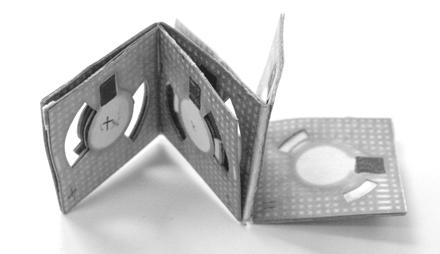
By Anuradha Wadhwani
Batteries are poised to become the heroes of the future -- in consumer electronics, vehicles and now homes. But it’s not just the applications of batteries that are advancing; expectations about battery capacities have soared to unprecedented levels. Energy-guzzling electronics are constantly hungry for power, and the more rechargeable battery technologies we have, the better.
But this is an area where environmental agencies are urging companies to tread with care. Most batteries contain heavy metals that harm our health and the environment. While Americans purchase an estimated 3 billion dry-cell batteries annually, the European Commission says: “Every year, approximately 800,000 tons of automotive batteries, 190,000 tons of industrial batteries, and 160,000 tons of consumer batteries enter the European Union.” Although thousands of tons of these batteries end up in landfill sites each year, recycling rates remain disappointingly low.
Interestingly, this also points toward a white space that is now attracting some attention: bio-batteries. The term refers to batteries that contain no toxic materials and are biodegradable. The interest in biodegradable batteries has been building up for a while now. Biologists and scientists have realized that many naturally-occurring materials can store and release energy for modern-world applications, such as smartphones, laptops, wearable electronics and medical devices.
Car electronics and textiles powered by all-natural, biodegradable batteries
A team of researchers from Sweden’s KTH Royal Institute of Technology collaborated with their counterparts at Stanford University to use wood fiber to develop a battery. The results, published in June, were immensely encouraging. The team was able to successfully develop soft, elastic batteries with surprisingly high capacities using nanocellulose derived from tree fibers. The researchers say that the ‘aerogel’ material will find uses in vehicles and clothing.
Last year, researchers at Virginia Tech found sweet success with a bio-battery that’s powered by sugar – an energy-storage powerhouse. What’s equally fascinating is that this refillable battery is 10 times more energy-dense than a lithium-ion battery of the same size. From cell phones to video games to tablets, the sugar-powered battery could hit the commercial electronics market in about three years, says associate professor Y.H. Percival Zhang, who spearheaded the project.
In June engineer Seokheun Choi, from the University of Binghamton, used something more abundant than sugar to reach a new milestone in battery technology: microbes. He applied the Japanese art of origami to build a battery that draws energy from microbial respiration. Dirty water, which teems with organic matter, works like a charm on this battery, Choi says. A single drop of dirty water can generate enough power for a biosensor. For five cents a piece, the battery could be a game-changer if it is successfully commercialized.
Biodegradable batteries that could revolutionize drug delivery
Imagine a tiny battery that travels through the body, administers a precise drug dose at the desired location, and disintegrates without a trace. In a few years from now, drug delivery, as we know it today, will never be the same.
Researchers led by Professor John Rogers at the University of Illinois have developed a biodegradable battery containing magnesium, tungsten, iron and molybdenum that can deliver drugs or wirelessly send data to an external device as it travels through the body. The biodegradable polymer-coated battery then dissolves gradually without any harmful effects.
At Carnegie Mellon University, researchers used cuttlefish ink to develop fully-biodegradable sodium-ion batteries that they describe as "edible." Professors Chris Bettinger and Jay Whitacre say that the battery, which is about the size of an average pill, expands in size only when it reaches the desired location within the body thanks to its shape-memory polymer. And because it is so versatile, the battery could go much beyond drug delivery and fit perfectly in applications such as this biodegradable drone from NASA.
If these ideas are successful outside of a laboratory, they could revolutionize the very concept of ‘clean’ technology innovations. But that’s precisely where the problem lies: Bio-battery innovations have thus far been limited to laboratories. Unless these innovations from academic institutions find a commercial launch-pad sooner, it will be at least a decade before any real progress is made.
Image credits: 1) KTH Royal Institute of Technology; 2) Binghamton University; 3) Carnegie Mellon University
Having extensively worked as a journalist with leading national dailies in India, Anuradha Wadhwani now writes for market intelligence firm Transparency Market Research. Anuradha is passionate about tracking (and questioning!) market trends across areas such as sustainability, innovative materials, and chemicals.
TriplePundit has published articles from over 1000 contributors. If you'd like to be a guest author, please get in touch!














